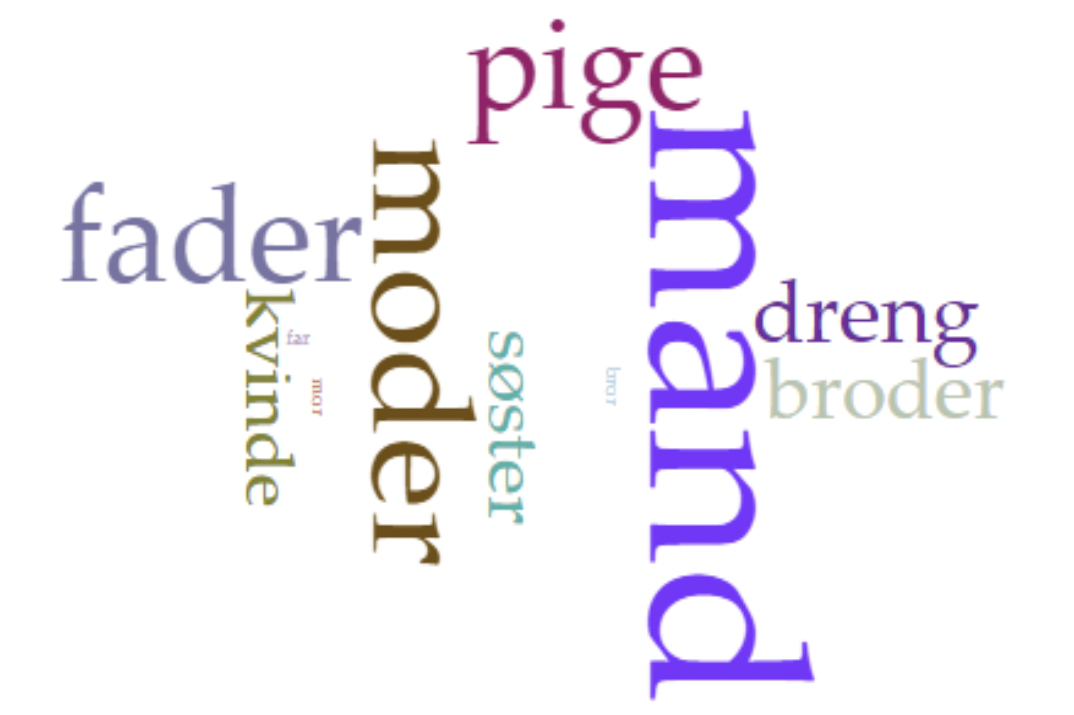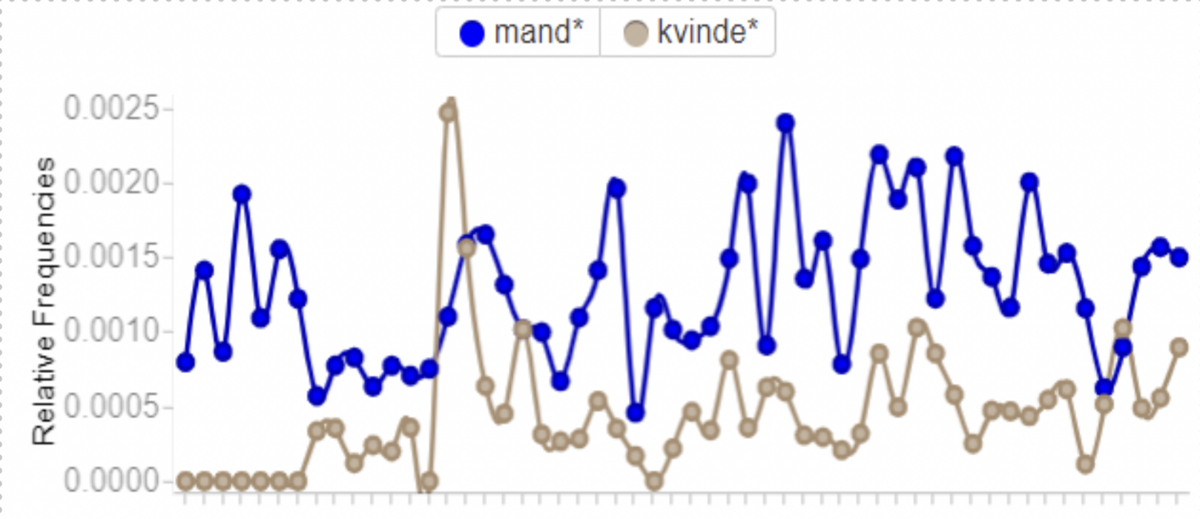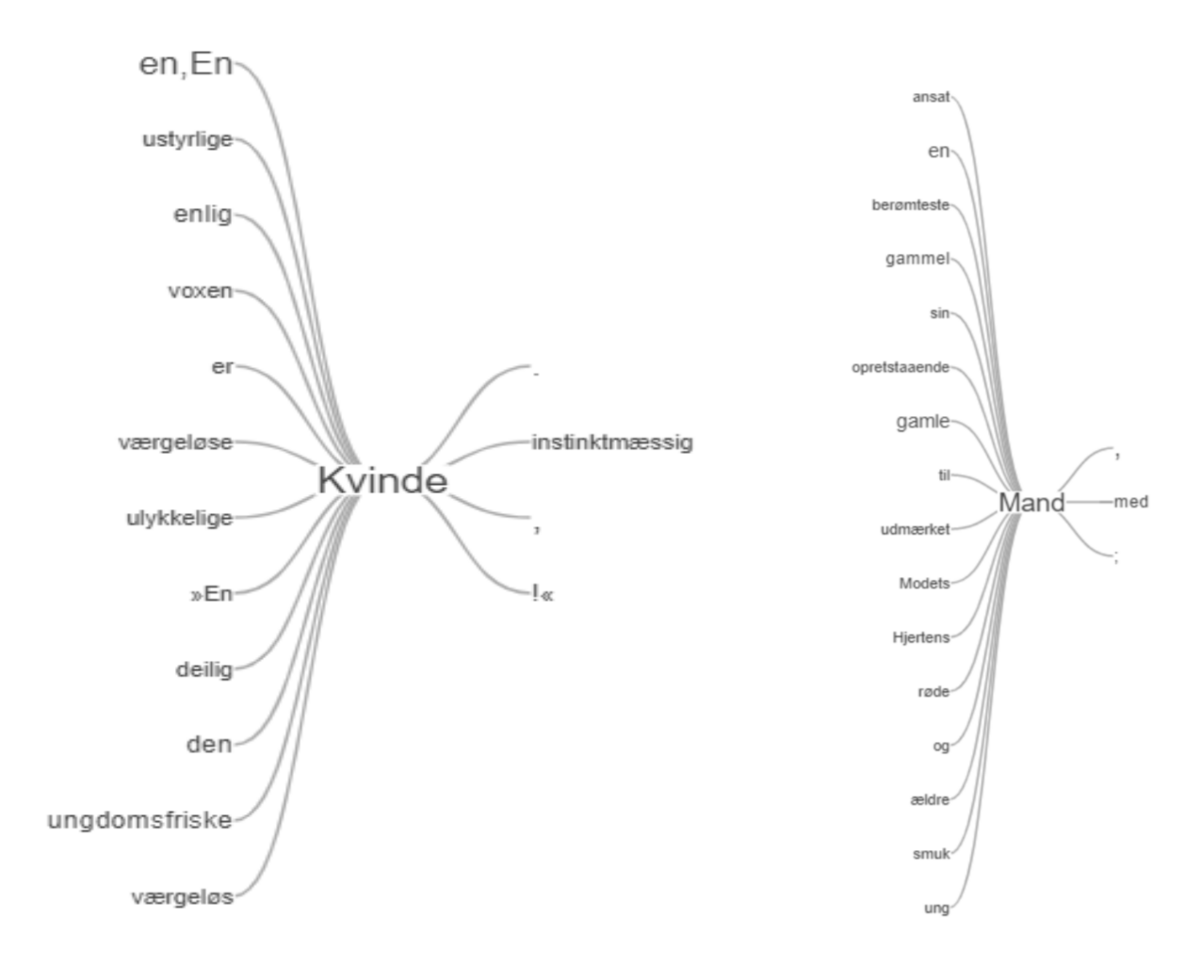Close and Distant Reading with Voyant
Equipped initially with research on the topic, then a video introduction to Voyant and experimentation with the program in predetermined tasks, the students were acquainted with the methodology of the computational literary approach of distant reading. Through class discussions, teacher assistance, the students' own hypotheses, and analysis, they gained an understanding of the method, the advantages and disadvantages of using such an approach, and what possibilities might be available through this type of approach.
Motivation
In recent years, distant reading tools have gained a footing within Danish and Scandinavian literary studies, and there is no doubt that this tendency will increase in the future.
Students are theoretically aware, but not necessarily methodological so. Digital methods offer a specifically methodological contribution to literary studies that might even lead to a greater general methodological awareness.
Use of technology
- Voyant Tools
Voyant has a low entrance barrier and is well suited to stimulate the students’ appetite for experimenting with digital methods. Furthermore, the University of Copenhagen's local version of the software contains some pre-formatted corpora that are relevant to students of Scandinavian literature.
Outcome
Before the sessions the students had no or limited experience working with distant reading tools. During the session, they achieved a general awareness of distant-reading as a method in literary studies and a specific awareness of the possibility of combining distant-reading with close-reading methods in literary studies. They got hands-on experience when using Voyant Tools, and when working on a self-identified issue. Furthermore, they achieved an awareness of how time-consuming distant-reading is, the opportunities of the method, of problems one meets when doing so, and of the heuristic limitations of distant-reading.
Activities
-
Before the first session, the students read articles that introduced them to distant-reading as a method and to the possibility of combining it with close reading methods before class (See three featured texts under ‘Links and materials’ in the right-hand menu)
-
The students were also asked to watch a 20-minute video that introduces Voyant Tools on Youtube.
-
During the session, the students were introduced to Voyant Tools and experimented with the program.
-
They were then introduced to the group work in class at the end of the first session.
-
They were asked to formulate a thesis that they wanted to investigate in a self-chosen corpus, with the help of Voyant tools. In the University of Copenhagen-version of Voyant tools, there are corpara available, but they were also free to choose texts themselves. A few prewritten theses are also supplied for inspiration.
-
-
They were also asked to identify appropriate tools within Voyant tools for their analysis.
-
Lastly, they were asked to visualize and analyze their results.
-
In the second session their results were presented and discussed in class.
-
This lead to a general discussion of the usability of distant reading tools in the students’ coming literary projects in class.
Ressources and support
-
Articles, links, examples and references, introducing Voyant Tools and distant reading.
-
The students were shown concrete examples on distant readings within Scandinavian literature (find these under ‘Links and materials’ in the right-hand menu).
-
The students were supported through instructions on the use of Voyant Tools, feedback on the presentation of their distant readings, and presentations, by student instructors who were working with distant reading tools in their MA theses.
Challenges and advice
-
It is important to allocate as much time as possible to the introduction of Voyant Tools to the students and to their experimentation with the tools. Ideally, a complete session should be devoted to this.
-
The number of pedagogically appropriate articles and book chapters on distant-reading of Scandinavian literature and on distant-reading as a methodological tool in literary studies in Danish is (still) limited, but every year, the number increases.
-
Using the University of Copenhagen version of Voyant proved to be a challenge, since it was not possible for the students to make use of it in the week, when they did their group work. A piece of advice for other teachers is to obtain and test access to Voyant in order for the students to be able to use the program when it is needed.
Jens Lohfert Jørgensen on his teaching case:
Basic information:
Teacher: Jens Lohfert Jørgensen
Faculty: Faculty of Social Sciences and Humanities, Aalborg University
Discipline: Nordic studies
Course: Contemporary Theories and Methods in Scandinavian Studies
Level of study: MA
Teaching method: Lectures, small class teaching, teaching by student teachers
Number of students: 19
Duration: Short series of sessions (2)
Academic objective
The academic objective was to introduce the students to distant-reading tools, focusing on how they can be combined with close-reading methods that they are familiar with. The objective was also to make the students aware of the possibilities that such tools offer.
Links and materials
Theoretical texts on the method of distant reading
-
Franco Moretti: "Patterns and Interpretation". Literary Lab Pamphlet 15, 2017.
-
Karl Berglund: "Fjärrläsning. Datorstödda metoder för kvantitativ litteraturforskning". I: Sigrid Schotthenius Cullhed, Andreas Hedberg og Johan Svedjedal (red.): Litteraturvetenskap II. Lund: Studentlitteratur, 2020: 227-246.
-
Louise Schou Therkildsen og Jon Viklund: "Digital tekstanalyse: Fjernlæsning". I: Mette Bengtsson, Kristine Marie Berg, Stefan Iversen (red.): Retorik og metode. Frederiksberg: Samfundslitteratur 2020: 189-211.
Based on these texts and an online “Introduction to text mining with Voyant”, available on YouTube (https://www.youtube.com/watch?v=OtW5qo3Y2Sc), the students are introduced to distant reading as a method in literary studies in class.
Texts that exemplify distant reading analyses
-
Karl Berglund: ”Killer plotting. Typologisk intriganalys utifrån fjärrläsningar av 113 samtida svenska kriminalromaner”. Tidsskrift för litteraturvetenskap 47:3-4, 2017,
-
Peter M. Broadwell og Timothy R. Tangherlini: “Confusing the Modern Breakthrough: Naïve Bayes Classification of Authors and Works”. Human-IT 14:2, 2018,
-
Karl Berglund, Mats Dahllöf og Jerry Määttä: ”Apples and Oranges? Large-Scale Thematic Comparisons of Contemporary Swedish Popular and Literary Fiction”. Samlaren 140, 2019
-
Frode Boasson og Anders Skare Malvik: “Digital humaniora, mediehistorie og litterære subjektivitetsuttrykk. Om forholdet mellom norsk litteratur og utviklingen av den kommersielle pressen 1855–1900 i et DH-perspektiv”. Norsk litteraturvitenskapelig tidsskrift 22: 2, 2019.


